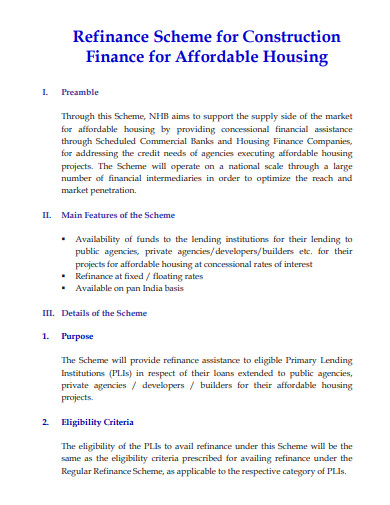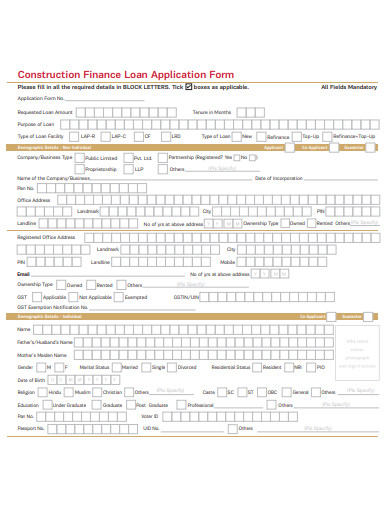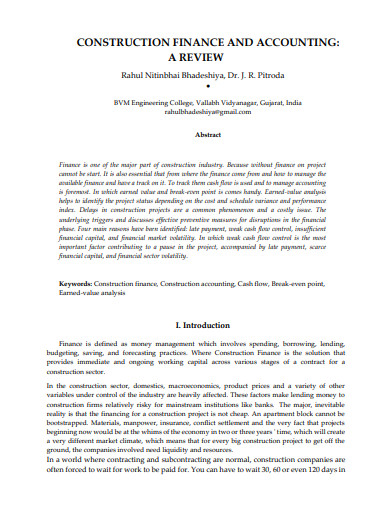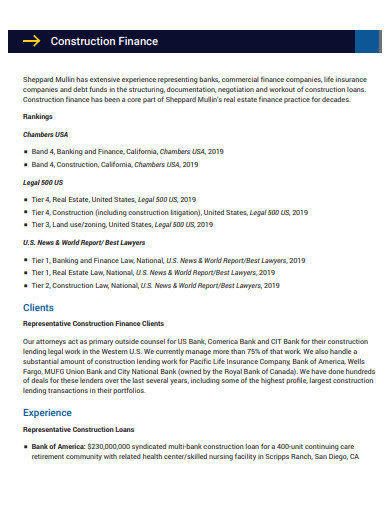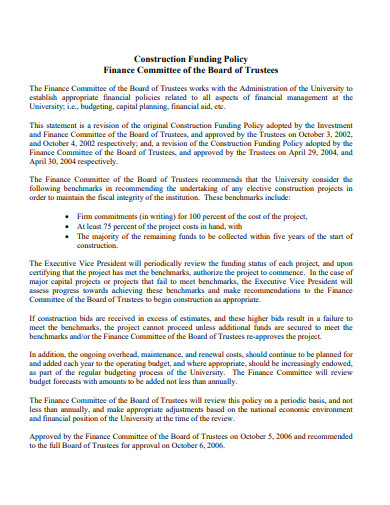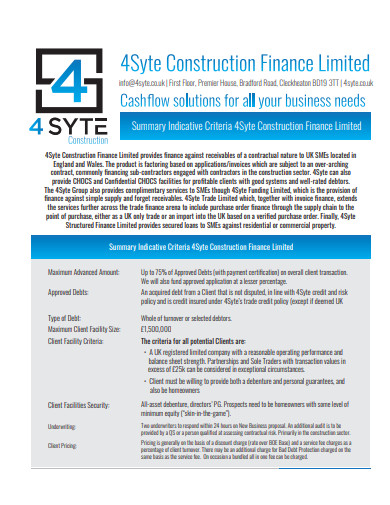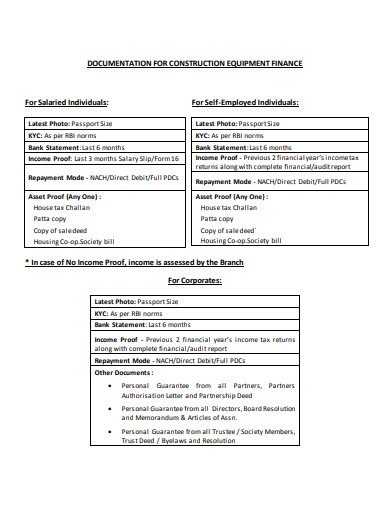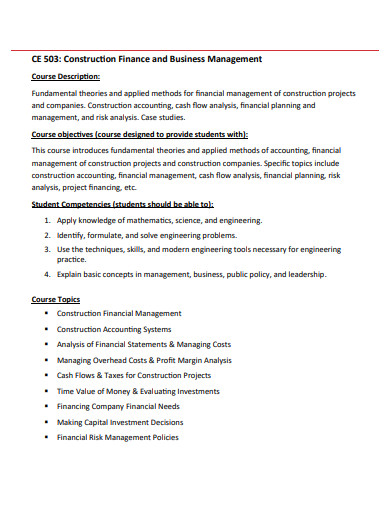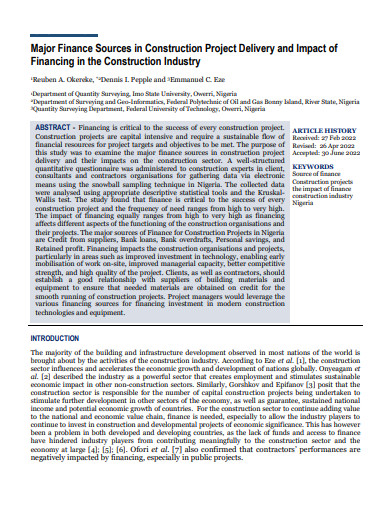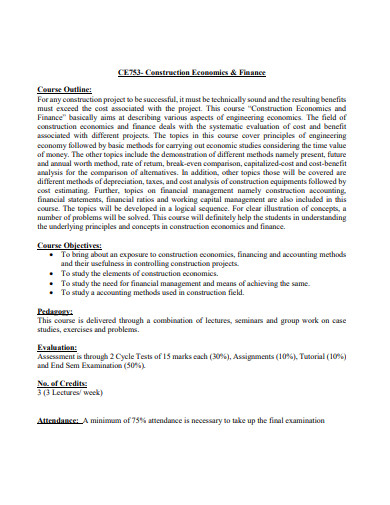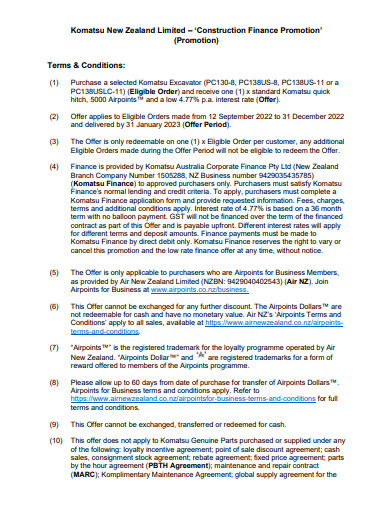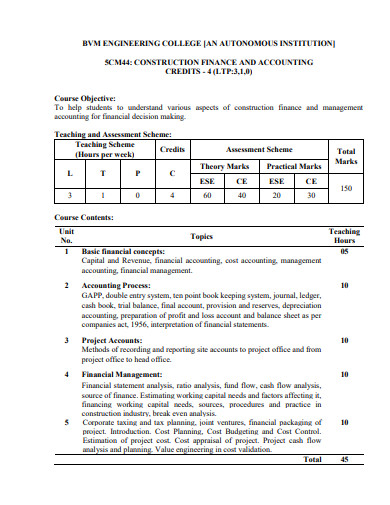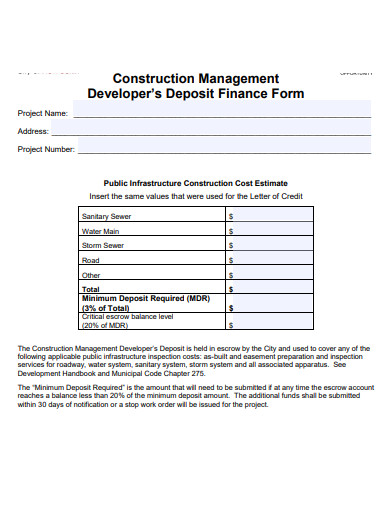Mastering the finances of a construction project is just as crucial as laying down its first brick. Our Sample Construction Finance Template serve as the robust foundation you need to oversee every dollar and cent. Curated with industry insights, these templates are tailored to simplify complex budgeting tasks, optimize costs, and track expenses effectively. If you’re looking to elevate your construction finance game, you’ve just struck gold. Dive in and discover tools that translate to timely, under-budget project completions.
13+ Construction Finance Samples
1. Free Construction Monthly Finance Tracking Template
2. Construction Finance for Affordable Housing Template
3. Construction Finance Loan Application Form Template
4. Construction Finance and Accounting Review Template
5. Construction Finance Template
What is a construction finance template?
A construction finance template is a specialized financial tool designed specifically for the construction industry. At its core, it’s a structured format that aids professionals in managing the intricate financial aspects of their projects.
Understanding its Components
Before diving deeper, it’s essential to familiarize oneself with the primary components of such a template:
- Budget Estimate: This is the initial calculation of how much the project is expected to cost. It includes materials, labor, equipment, and other overhead expenses.
- Cost Tracking: This section monitors the actual expenses as the project progresses. It helps compare the real-time expenses against the budgeted amounts, ensuring that the project remains on track.
- Billing and Invoices: This part is vital for ensuring that all the payments, both incoming and outgoing, are adequately managed. It involves tracking payments made to suppliers, workers, and other parties, as well as funds received from clients or investors.
- Financial Forecasting: This component projects future expenses and revenues, helping construction managers anticipate financial needs or identify potential challenges.
Template Varieties
Depending on the size, scope, and nature of the project, there are different types of construction finance templates. Some might be designed for residential projects, while others are tailored for commercial or infrastructural projects. However, the underlying principle remains consistent – to offer a clear financial roadmap for the entirety of the construction project.
Adaptable to Technology
With the advent of modern technology, many construction finance templates have transitioned from traditional paper formats to digital ones. Today, software solutions offer dynamic templates that can automatically update figures, generate reports, and provide real-time insights into the financial health of a project.
6. Simple Construction Finance Template
7. Construction Finance Limited Template
8. Documentation For Construction Equipment Finance Template
9. Construction Finance and Business Management Template
10. Basic Construction Finance Template
11. Construction Economics and Finance Template
12. Construction Finance Promotion Template
Why do I need a construction finance?
In the intricate world of construction, where numerous variables can impact the cost and profitability of a project, having a structured and reliable way to manage finances is paramount.
Ensuring Financial Accuracy
The construction industry is riddled with intricate details. From the number of nails needed for a particular section to the hourly wage of a specialized worker, every tiny aspect can affect the overall budget. A construction finance template ensures that each financial element is logged and tracked, minimizing errors and oversights.
A Predictive Tool for Better Planning
With a well-structured financial template in place, professionals can predict potential budget overflows or shortfalls. This foresight allows for better planning, whether it’s reallocating resources, renegotiating contracts, or seeking additional funds.
Time-saving and Efficiency
Manually tracking every expense, invoice, and financial projection can be a daunting task. A construction finance template streamlines these processes, enabling managers to focus more on the actual construction work. It reduces administrative burdens and ensures that financial aspects are handled efficiently.
Enhanced Stakeholder Communication
Whether it’s investors, clients, or team members, everyone involved wants to be informed about the financial status of the project. With a construction finance template, you can generate transparent and easy-to-understand reports that build trust and keep stakeholders informed.
Risk Management
The financial aspect of construction projects often poses risks – from sudden price hikes in materials to unforeseen labor costs. Using a construction finance template allows for immediate identification of these potential risks. When they are spotted early, strategies can be developed to mitigate them, ensuring that the project remains financially viable.
In essence, a construction finance template isn’t just a tool; it’s a safety net, a planner, and a communicator, all rolled into one. It’s a vital component for any construction professional aiming to complete a project successfully, both structurally and financially.
13. Construction Finance and Accounting Template
14. Sample Construction Finance Template
How do you make a finance sheet?
Crafting a finance sheet is essential for managing money, understanding your financial health, and planning for the future. It serves as a detailed ledger of your incomes and expenses, providing clarity and transparency in your financial dealings. Below is a step-by-step guide to creating a comprehensive finance sheet:
Determine Your Objectives
Before diving into the numbers, clarify why you’re creating this sheet. Are you aiming to budget monthly expenses? Track investments? Plan for retirement? Your objectives will dictate the layout and categories you’ll need.
Choose a Platform
Today, there are myriad tools available, ranging from traditional pen and paper to digital platforms. Options like Microsoft Excel, Google Sheets, or specialized finance apps offer flexibility and automation capabilities that can simplify the process.
Layout the Basic Structure
Begin with a clear layout. Typically, you’ll want columns for:
- Date
- Description
- Income
- Expense
- Balance
Remember, this structure can be adjusted based on your unique requirements.
Categorize Your Finances
Segmenting your finances into categories helps in understanding where your money comes from and where it’s going. Some common categories include:
- Salaries/Wages
- Investments
- Groceries
- Utilities
- Entertainment
Input Regular Incomes and Expenses
Begin by listing all your fixed incomes, like salaries or rental incomes. Then, detail out your fixed expenses—those that remain consistent each month. This could be your mortgage, car payment, or subscriptions.
Record Variable Transactions
For daily or weekly expenses, update the sheet as you spend or receive money. This could include shopping, dining out, unexpected medical expenses, or freelance income.
Regularly Update and Review
Set aside a time each week or month to update your sheet. Consistency is key. The more accurate and up-to-date your data, the more useful your finance sheet will be.
Implement Formulas (For Digital Sheets)
- If you’re using a digital platform, take advantage of its formula capabilities. For instance:
- Automate the ‘Balance’ to update as you add incomes or expenses.
- Use SUM functions to get total monthly or annual figures.
- Use conditional formatting to highlight certain values, like expenses exceeding a certain amount.
Analyze and Adjust
After using your finance sheet for a while, you’ll begin to see patterns. Maybe you’re spending more on dining than you realized, or perhaps you’re not saving as much as you’d hoped. Use these insights to adjust your spending habits and financial goals.
Protect Your Data
If your finance sheet is digital, ensure it’s stored securely. Use strong passwords, backup your data, and consider encrypting the file if it contains sensitive information.
In essence, a finance sheet is more than just numbers on a page or screen. It’s a dynamic tool that, when used effectively, can empower you to take control of your finances, make informed decisions, and move towards your financial goals with clarity and confidence.
Related Posts
Retirement Speech Samples & Templates
Weekly Schedule Samples & Templates
Contractual Agreement Samples & Templates
FREE 9+ Amazing Sample Church Bulletin Templates in PSD | PDF
Sample Business Card Templates
Sample Cashier Job Descriptions
Questionnaire Samples
FREE 10+ Sample HR Resource Templates in PDF
FREE 49+ Sample Job Descriptions in PDF | MS Word
FREE 23+ Sample Event Calendar Templates in PDF | MS Word | Google Docs | Apple Pages
Company Profile Samples
FREE 10+ Leadership Report Samples [ Development, Training, Camp ]
FREE 24+ Sample Payment Schedules in PDF | MS Word
FREE 10+ Return to Work Action Plan Samples in PDF | DOC
Autobiography Samples & Templates

